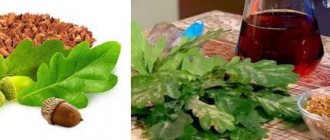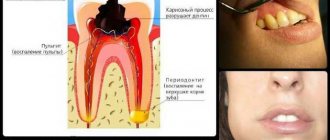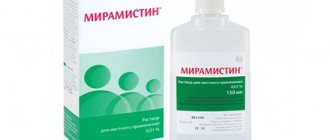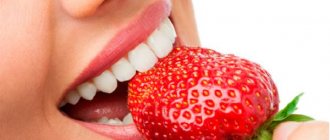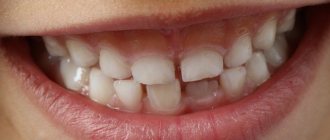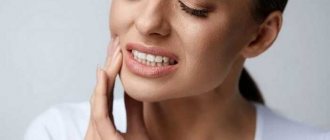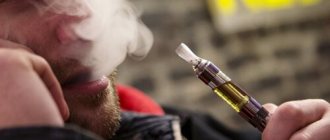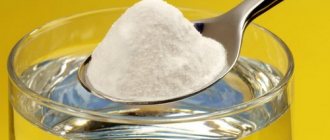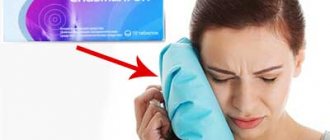Local anesthesia at home
In rare cases, but sometimes you have to deal with the need for pain relief at home.
Most often it concerns cosmetic procedures, for example, hair removal on the legs. Local anesthesia will significantly reduce the pain threshold and make the procedure completely painless. There are two types of anesthesia - general and local. General anesthesia or anesthesia puts a person into deep sleep, turning off his consciousness and pain sensitivity. With local anesthesia under the influence of special drugs, only a certain part of the body is deprived of sensitivity, but consciousness remains clear. This type of anesthesia can be performed at home.
Cold pain relief
Cold is often used for local home anesthesia. It helps not only to soothe pain, but also to stop bleeding (external or internal), so when receiving household microtrauma, people run to the refrigerator to immediately numb the damaged area. And even children know that temporary cold therapy helps to partially relieve pain, because parents offer to blow on the injured area.
Compared to tablets and external medications, local anesthesia with cold at home is not the most effective method of pain relief. But it is considered the safest option because it:
- available (ice or frozen convenience foods, cold tap water);
- acts quickly (analgesic effect occurs within a few seconds);
- minimum side effects (if you do not overexpose the ice, there will be no consequences).
People with cold allergies accompanied by hives or more severe symptoms should be wary of using home cold pain relief.
Curious! During the Battle of Borodino, French doctors performed amputations on their soldiers, using snow and ice to dull the pain.
When is anesthesia necessary?
Local anesthesia at home is used:
- in case of severe toothache;
- for closed injuries - sprains or bruises;
- for burns;
- for pain in the eye and throat.
Some cosmetic procedures also require pain relief - electrolysis, peeling and skin cleansing, permanent makeup. Sometimes local anesthetics are used for severe sore throats.
You can only do superficial and terminal pain relief on your own. Anesthesia by injection can only be performed by a medical professional who knows the intricacies of injections and possible complications from using a specific anesthetic drug.
Aroma lamp for headaches
If headaches often plague you or your family members, then consider purchasing an aroma lamp. This simple device will help you perform aromatherapy every day. To relieve headaches, the following recipes will be useful:
1. For temporal pain. Pour clean water into the aroma lamp and add 3 drops of pine oil, 2 drops of geranium oil and 1 drop of lemon oil. Then you should light a candle under a reservoir of water, cover the lamp with a lid and enjoy a pleasant way of healing.
2. When overwork and eliminating its consequences, try adding orange and ylang-ylang essential oils to the aroma lamp. This mixture will help you relax, lift your mood and improve your appetite.
Types of local anesthesia that are possible at home
Most often, superficial anesthesia is performed at home.
This type of anesthesia involves direct contact of the anesthetic with the skin and mucous membranes. Ether or chloroethyl is used as an anesthetic. The sensation of pain is lost by cooling the selected area of skin. Superficial anesthesia is also used for traumatic injuries, bruises and sprains. Lidocaine spray is used to numb burns. In such cases, it is also recommended to apply a sterile dressing with 5% anesthetic ointment. To reduce pain in the respiratory tract (trachea and bronchi), sprays with lidocaine and dicaine are used - these drugs are administered through a special catheter.
Anesthetic drugs in various forms are used during cosmetic procedures. Before the hair removal procedure (electrical, wax or laser), lidocamne or dicaine spray is applied to the skin areas. Here you can also use a special cream with lidocaine or trilocaine. To achieve a good analgesic effect, a napkin with cream is applied to the skin area and kept under cellophane film for 2 hours.
For a deeper effect of lidocaine, the ointment is applied to the skin, previously steamed and dried, and then wrapped in cellophane. This compress is left for 3 hours and then the procedure begins. To remove facial hair, it is recommended to use Empa cream with prilocine and lidocaine. The cream is rubbed into the skin, covered with a film and left for 2 hours, after which epilation is performed.
The following agents are recommended for topical anesthesia:
- Lidocaine 5% in gel form
- Prepcaine cream
- Gel Sustain
Severe pain in the throat can be easily relieved with Antiangin, which contains tetracaine as an anesthetic and chlorhexedine, which has antimicrobial properties.
To relieve severe pain in the eyes (after ophthalmological operations, when removing a foreign body from the eye), drops of Alcaine, Lidocaine, Inocaine are used. The analgesic effect begins within 1-2 minutes and lasts for more than a quarter of an hour.
If your tooth hurts a lot...
For severe pain in the oral cavity that is associated with teeth or gum problems, use gels and ointments. The following are in great demand:
- Cholisal is an ointment with chamomile extract and lidocaine hydrochloride, which blocks pain impulses.
- Dental-Baby gel contains benzocaine, which has a freezing effect on the oral mucosa. Actively used during teething in babies.
- Kamistad gel is used only by adults. The product has a cooling effect and significantly reduces pain during the eruption of wisdom teeth. Applications with the gel can be done up to five times a day.
- Kalgel is a product of a combined composition that has an anti-inflammatory and anesthetic effect.
- Dentinox is a combination drug containing lidocaine, polidocnol and chamomile extract.
To relieve toothache, solutions of ultracaine, aricaine, and ubestizin are used in the form of applications. These solutions are also actively used by dentists in clinics.
Aromatherapy
Essential oils have a huge spectrum of action. They not only have a pleasant smell, but also eliminate unpleasant symptoms of diseases, and also help treat some ailments.
The following oils are rightfully recognized as the most effective essential oils for severe headaches:
1. Lavender oil. It can often be found as the main ingredient included in folk medicinal recipes. This oil is actively used both in perfumery and cosmetology, as well as in folk medicine. It is very versatile and can be used by people suffering from respiratory diseases or allergies. Lavender oil can help cure headaches. This effect is achieved due to the content of provaleric acid, butyric acid, mineral salts, and linalol octane. Lavender ether will help lower blood pressure, normalize heart rate and relieve pain in a disturbing part of the body.
2. Peppermint oil. Menthol is the main active component of mint oil. It has mild anesthetic and antiseptic properties, activates cold receptors, which reduces sensitivity and helps to distract from pain. Peppermint oil can be used for rubbing. To do this, you need to apply a small amount of essential peppermint oil to the forehead, temples or back of the head, depending on the location of the pain, and rub the oil with active massaging movements until completely absorbed. Peppermint oil has a vasodilating effect, which helps relieve attacks of epilepsy and improve cerebral circulation.
3. Rosemary oil. It ideally combines antispasmodic, immunomodulating and anti-inflammatory effects. It is important to remember that only rosemary oil does not leave a negative sedative effect when relieving pain and relieving spasms. It also helps to significantly improve memory and cerebral circulation.
It is worth mentioning separately the effect of essential oils in the treatment of headaches caused by colds. Inhalation with adding oils to water will help get rid of this symptom.
Chronic, persistent headaches can be cured by taking warm, relaxing baths with a couple or three drops of essential oils of sage and basil.
What to use for joint pain?
Local anesthesia is often required in cases where joints and muscles hurt. To relieve severe pain, use:
- Gevkamen is a menthol ointment that has a cooling effect and has a positive effect on blood microcirculation. The product can relieve primary pain.
- Capilar cream - perfectly cools and relieves pain with the help of turpentine, essential oils and camphor, which are present in its composition.
- Lidochlor gel has an inhibitory effect on nerve impulses and strengthens cell walls.
- Nicoflex is a combined drug that has an anesthetic effect (ethyl nicotinate, capsacin) and a calming effect (lavender oil).
- Perclusone ointment is a product with an analgesic and anti-inflammatory effect.
Read also: Amoxiclav in dentistry
8 Comments on “Local anesthesia at home”
How long after applying lidocaine gel does the anesthetic effect occur?
Anesthesia occurs 20 minutes after applying the gel. To achieve the best result, apply the gel to clean skin twice with an interval of 5 minutes and cover the area with film.
Prepcaine cream was recommended for local anesthesia before hair removal. What are the features of its action?
Prepcaine cannot be classified as a quick-acting drug. The anesthetic effect occurs only 2 hours after application.
What anesthetic is suitable for mesotherapy?
In the case of such procedures, it is worth choosing products with a long-term anesthetic effect, for example, Sustain. This drug, in addition to anesthetics, contains adrenaline, which prolongs its analgesic effect.
What is the advantage of combined agents used for local anesthesia?
Combined drugs contain, in addition to anesthetics, components of anti-inflammatory and sedative effects. These drugs not only relieve pain, but also have a medicinal effect.
Water balance
Maintaining an optimal water-salt balance helps strengthen the body's immune forces. You need to start treating a headache, first of all, by quenching thirst, both obvious and hidden. Sometimes the feeling of thirst is falsely perceived by the human body as a feeling of hunger.
Drink a glass (250-300 milliliters) of clean, cool water and, most likely, the result will not be long in coming. If this does not help, you can try other methods of pain relief and spasm relief without the use of drugs.
When is anesthesia used at home?
Reasons why pain relief is used at home:
- toothache;
- closed injuries - bruises, sprains;
- burns;
- pain in the eye due to eye damage;
- acute myositis, neuralgia;
- some cosmetic procedures - electrolysis, injection techniques, permanent makeup, acid peels;
- sore throat.
The patient can only administer superficial and terminal anesthesia at home. Injection - must be carried out by a medical professional, since the injection can provoke an allergic reaction, vascular spasm with a drop in pressure, severe arrhythmia, and breathing problems. These situations require urgent assistance from medical personnel.
Cold
All you have to do is catch a cold...Ear, throat, head - everything hurts. It is difficult not only to get dressed and go to the nearest pharmacy, but also to get out of bed. Nevertheless, try to get to the kitchen and prepare yourself some painkillers:
- Lemon zest helps with a sore throat. Just chew it or give it to your baby - it is an absolutely safe pain reliever;
- dissolve 15 milliliters of honey in 250 milliliters of warm milk, add 15 grams of butter. Drink up to 6 times a day;
- chop the onion, add sugar. Drink 15 milliliters of juice obtained from the vegetable three times a day; Squeeze the juice from 1 beet, add 15 milliliters of wine or apple cider vinegar. Gargle 3 times a day;
- If you or your child has an earache, place the onion and peel in the oven. As soon as juice begins to come out of it, remove the vegetable, squeeze the juice through gauze and drop a few warm drops into the sore ear;
- if your ear hurts a lot, but also oozes pus, mix an equal amount of alcohol tincture of propolis with honey and drop 2-3 drops at night. Be sure to go to the doctor in the morning;
- dissolve honey in vodka, moisten gauze and make a compress around the sore ear;
- When you have a headache during a cold, add 2 grams of cinnamon to 60 milliliters of hot water. Drink 2 sips every hour. Additionally, make lotions for whiskey;
- heat the lemon pulp, brush with whiskey.
Traditional methods of treating colds
Types of local anesthesia
Superficial anesthesia is a local anesthesia that directly affects the nerve endings on the skin, mucous membranes, and wound surfaces. In such cases, ether and chloroethyl are used. Painful sensations disappear due to cooling of the skin area. Such preparations are used on intact skin.
They are used for fresh injuries, bruises and sprains. A solution of lidocaine in the form of a spray is applied to burn wounds. You can still
apply 5% anesthetic ointment under a sterile bandage. Sprays with lidocaine or dicaine are used to anesthetize the bronchi and trachea. The drugs are administered using a catheter.
For cosmetic procedures, such as electro-, wax and laser hair removal, anesthetic medications are used in different release forms. A spray with lidocaine or dicaine is applied to the areas before the procedure. You can use an epilation cream with lidocaine or trilocaine, treating the desired area under cling film 2 hours before the procedure. Afterwards there will be good pain relief.
In order for lidocaine to act as deeply as possible, first of all you need to resort to a warm bath, then dry the skin well, apply cream or spray and wrap it with film. Leave for 3 hours and then proceed with the procedures. For pain relief when removing hair on the face or abdomen, use Emla cream, which contains prilocaine and lidocaine. The drug is rubbed into the treated area and covered with a film for 2 hours, then you can begin hair removal.
Application anesthesia is carried out using creams and gels:
- Lidocaine gel 5% is applied to clean skin 2 times with an interval of 5 minutes, then the area is protected with a film and left for 20 minutes.
- Prepcaine cream contains lidocaine, tetracaine, and benzocaine. The skin is treated with it 2 hours before the procedures.
- Gel Sustain consists of lidocaine, tetracaine and adrenaline. Due to the latter, the anesthetic effect of the drug is prolonged. Used during mesotherapy sessions and tattooing. Can be used on wound surfaces.
For severe sore throat, Antiangin is recommended, which contains tetracaine, an anesthetic, and chlorhexidine, an antimicrobial substance.
For pain relief for eye injuries, postoperative conditions, and foreign bodies in the eye, Alcaine, Lidocaine, and Inocaine drops are used. Anesthesia occurs within 1-2 minutes after instillation and lasts about 20 minutes.
Local anesthesia for dental ailments
For toothaches and inflammatory processes in the oral cavity, accompanied by severe pain, ointments and gels are used.
Read also: Vinyline for stomatitis
- Cholisal ointment contains chamomile extract and lidocaine hydrochloride, which blocks pain impulses.
- Gel Dentol-Baby - includes benzocaine, has local anesthesia and a freezing effect on the mucous membrane of the mouth and gums. Can be used in both adults and children. Most often used for teething in children.
- Gel Kamistad - used only in adults. Has a cooling effect. Relieves pain during wisdom teeth eruption. It is applied up to 5 times a day with a dry cotton swab or disk.
- Kalgel - with a combined composition has an anti-inflammatory and local anesthetic effect. Facilitates teething. Contains lidocaine hydrochloride.
- Dentinox is also a combination drug that contains lidocaine, polidocanol and chamomile flower extract. Relieves inflammatory processes, eliminates pain.
- To relieve dental lobes at home, you can use applications with a solution of ultracaine, articaine, and ubestizin. They are also used in dental practice.
Alternative Methods
Sometimes folk recipes cannot help relieve pain completely. If you do not want to use medications, then pay attention to alternative methods. Nowadays they are becoming more and more popular in relieving headaches.
1. Acupuncture. The so-called acupuncture method. During an acupuncture session, thin needles are inserted under the patient's skin, causing virtually no discomfort or discomfort. Thus, a restructuring of the directions of energy flows occurs. This method of treatment is especially relevant for headaches caused by overwork and overexertion.
2. Botox. Surprisingly, “beauty injections” are used not only as a means to smooth out wrinkles. Botox turns out to have many uses. Modern medicine offers to treat migraines in adults with Botox injections. This method is very effective, but its main disadvantage is the high cost of the materials used.
Treatment of headaches with folk remedies was popular among our grandmothers and remains relevant to this day. These universal remedies will help relieve spasms and pain without the use of drugs.
Ointments and gels for pain in joints and muscles
- Gevkamen - ointment with menthol perfectly cools and improves blood microcirculation. Relieves the first pain syndrome.
- Capilar cream - due to the content of turpentine, essential oils and camphor, it perfectly anesthetizes and cools the injured area.
- Lidochlor gel - inhibits nerve conduction and stabilizes cell membranes.
- During attacks of radiculitis, an anesthetic blockade is performed by injecting the patient with a solution of novocaine and anti-inflammatory drugs directly into the damaged areas.
- Nicoflex is a combined ointment that has an anesthetic effect due to ethyl nicotinate, capsacin (an irritant) and lavender oil with a calming effect.
- Perclusone ointment is an anesthetic drug with a local anesthetic and anti-inflammatory effect.
Other types of local anesthesia
In modern medical practice, general or local anesthesia is used. The first cannot be carried out at home, since it requires a set of certain devices and installations. It is necessary to have competent medical staff.
Local anesthesia is usually superficial using ointments, gels, sprays and lotions. But injection anesthesia is also known, which the patient cannot always do on his own.
For some types of operations, especially on the organs of vision or the genitourinary system, local anesthesia is used. This can be a lotion in the form of a moistened swab or irrigation with a special solution. In this case, active substances such as dicaine, lidocaine, trimecaine, novocaine are used.
Infiltration local anesthesia consists of sequential layer-by-layer injection into the area where the manipulation will be performed.
In dental practice, ropivacaine, ephedrine, novocaine or bupivacaine are used for pain relief, which are injected into a place located close to the nerve plexus.
In any case, it is necessary to use anesthetic drugs with caution to avoid undesirable consequences.
Rules for using painkillers
The appearance of pain is a clear diagnostic symptom (distress signal) of internal problems that require urgent solutions. Analgesics (natural, synthetic) will only help to pacify (stop) the raging pain syndrome, but the root cause that provoked the appearance of painful discomfort will remain.
Pain is the body’s language of communication with us (indicates the area of localization of the pathology, the degree of damage); the occurrence of such an unpleasant symptom does not always require immediate elimination.
The main thing is to defeat the disease behind the painful discomfort.
If the manifestation of pain is excessive, then it is difficult to achieve improvement without the help of analgesics. However, long-term use, with moderate pain sensitivity, is not the most optimal solution. Try to temporarily stop taking painkillers, as side effects can distort the clinical picture of the disease.
It will become difficult for a doctor to make an accurate diagnosis in a timely manner, to determine the root cause (source) of the pathological process, and the risks of complications increase.
To minimize the possible negative effects on the body from prolonged use of analgesics, you must adhere to medical recommendations.
Indications for safe use
Musculoskeletal pain caused by physical overexertion. Pathologies affecting the joint system, especially chronic variants. Minor injuries - sprains, bruises, abrasions, cuts, burns. Support for a sore tooth (temporary). Migraine attack, tension headache. Chronic pain if the cause of the pain has been identified (diagnosed).
The listed indications, of course, allow the use of an anesthetic internally, however, when the pain syndrome is moderate, it is advisable to use external means (ointments, gel) to relieve pain. Better take care of your stomach.
Internal reception requires extreme caution for patients who have officially “recorded” dysfunctions:
liver, gastrointestinal tract, and biliary system. Painkillers are strictly unacceptable for cases of pain of unknown nature, localized in the abdominal area.
The clinical picture characteristic of acute abdominal syndrome (abdominal catastrophe) is an absolute contraindication for self-administration of any painkillers.
This situation requires you to consult a doctor immediately in order to avoid the development of extremely dangerous complications (peritonitis), which pose a real threat to life.
The choice and prescription of an analgesic is carried out exclusively by a doctor, based on the diagnostics performed and a detailed history collected.
Rules of use
You cannot increase the dosage of the drug; initially, it is permissible (in consultation with your doctor) to reduce the single dose by half.
Lack of the expected effect is a reason to take the second half of the tablet.
Single-component analgesics are preferred over combination drugs because the severity of the inherent side effects is lower.
Painkiller pills on a regular basis are unacceptable, since the safety of even the most “harmless” ones is very relative. The pain is blocked temporarily, the cause is not eliminated.
The body becomes intoxicated and the drug accumulates. A typical example is that regular doses of an analgesic increase the risk of kidney disorders (reduction in organ size, nephrocalcinosis). Always follow your doctor's orders.
If you still decide to take it on your own (an extremely rash act!), then carefully study the instructions, which clearly state the maximum permissible daily dosage and time interval for use.
Take after meals with still water. Analgesics and alcohol are completely incompatible concepts. Acute stabbing pain in the abdomen or heart - call immediately 03. There are no harmless drugs; only more or less dangerous drugs are classified.
When the pain syndrome is moderate and does not cause noticeable discomfort, natural analgesics will be a worthy alternative to pharmacological drugs. After discussing with your doctor in advance, use herbal remedies to combat pain.
How to numb a tooth at home if it hurts a lot
A toothache can take a person by surprise. The reasons for it can be very different - from a simple stuck piece of food to serious inflammatory processes. Many people have severe toothache, tablets do not help - only a dentist can tell you what to do in this case. Traditional medicine and rectal suppositories help. But with the help of such methods only unpleasant symptoms are removed, the main cause is not eliminated.
Important! From a medical point of view, even basic caries can cause meningitis, sinusitis, and many other serious pathologies, so discomfort cannot be ignored. You should visit a specialist to find out the cause of the discomfort in order to prevent complications and the development of irreversible consequences.
General recommendations for discomfort
To the question of how to numb a tooth at home if it hurts a lot, I answer that you need to do the following procedure:
- if discomfort occurs to a person while eating, you should stop eating, brush your teeth thoroughly, and remove any leftover food with floss;
- then take painkillers;
- rinse the mouth with a soda solution (add a teaspoon of soda to 150 ml of boiled warm water);
- rinse the mouth with saline solution (100 ml of warm boiled water, 1 tsp of salt, preferably iodized);
- If there are no medications on hand, apply a cotton swab soaked in Valocordin.
Rinse solutions should be warm, because cold water can enter the nerve through possible microcracks. This will only make the discomfort worse. To achieve the desired result, you need to rinse for at least 5 minutes. The salt and soda solution must be alternated every 30 seconds. Rinse your mouth frequently. After the procedure, do not drink water for 15-20 minutes.
Important! Sometimes neither pills nor folk remedies help. In addition, the person begins to feel a constant pulsation. The cheek may become enlarged. These are signs of an inflammatory process. With such symptoms, it is better to immediately visit the dentist. These symptoms may be a sign of gum injury, caries, increased sensitivity due to thin enamel, gingivitis, pulpitis, periodontitis. Each of these pathologies causes serious complications.
Read also: Candida for the oral cavity
Cold or heating pad
Many resources contain information that you should apply ice or a heating pad to relieve unpleasant symptoms. You can't do this. If a person develops inflammation, then a heating pad only helps to intensify it. After all, in essence, inflammation is the proliferation of a harmful infection. In a warm environment, it reproduces much more intensively. Regarding ice, it is impossible to answer the question unequivocally. It can cause increased pain because it will irritate the exposed nerve or thin enamel. But the alternative is to apply cold to the ear or temple area. The pain will actually become a little less. But if you apply something cold to your forehead or earlobe, then there will be no trace of discomfort.
Pain with pancreatitis
Acute or chronic pancreatitis is inflammation of the pancreas. The disease can manifest as acute pain at any time of the day. If you are unable to immediately visit a doctor, I recommend using several painkiller prescriptions:
- soak a soft cloth with yogurt, make a compress on the stomach area and left side, secure with cling film, and insulate. Leave it on overnight;
- Grind 1 kilogram of lemons, 300 grams of parsley and garlic in a meat grinder. Take a teaspoon three times a day, 15 minutes before the main meal.
Be prepared for the pain to not go away completely. The means described will only reduce its intensity. Pancreatitis is a serious disease. It definitely needs to be treated, and not just try to relieve pain.
Lemon with parsley and garlic
Medicines
All medications have contraindications and side effects. You cannot violate the dosage. Taking 2-3 tablets does not always give the desired result. On the contrary, a person begins to feel side effects without getting rid of the discomfort.
The most common medications:
- Ketones. This is the best medicine for toothache. Prohibited for children under 16 years of age, during pregnancy, lactation, and with bronchial asthma. Cost from 120 to 260 rubles.
- Ketarol. Contraindications: liver dysfunction, stomach ulcers, pathologies of the respiratory system, age under 16 years, pregnancy, lactation. Price 50-70 rub.
- I took it. Effective for relieving discomfort of mild to moderate intensity. Contraindications: hypersensitivity, liver and kidney dysfunction, pregnancy, lactation, age under 16 years. The effect is enhanced by sedatives and tranquilizers. Price 83 rub.
- Ketonal. It has analgesic and anti-inflammatory properties. An effective cure for toothache. Contraindications: stomach ulcer; liver, kidney failure; pregnancy; lactation; children under 12 years of age; diabetes. Price 194 rub.
- Blink. Has anti-inflammatory, analgesic effects. Contraindications: peptic ulcers; pathologists of the circulatory system; pregnancy; lactation period; children's age up to 12 years. Cost 55 rub.
- Solpadeine. Helps quickly reduce discomfort. The tablet dissolves in water. Therefore, it acts faster than other means. Contraindications: acute attacks of bronchial asthma, respiratory diseases, increased intracranial pressure. During pregnancy and lactation, the medicine is prohibited. Cost from 136 to 150 rubles.
- Nimesil. A nonsteroidal anti-inflammatory drug that has analgesic, anti-inflammatory, and antipyretic effects. It comes in powder form. Therefore, it will help you quickly get rid of unpleasant sensations. Contraindications: toxic reactions from the liver; stomach ulcer; heart failure; age under 12 years; pregnancy, lactation period. Cost 774-886 rub.
- Dental drops. The base is valerian tincture. Ingredients: camphor (bactericidal, antimicrobial effect), peppermint oil (disinfects); valerian (calming). This medicine is the cheapest. They need to rinse the problem area. But with severe, intense pain, it will not have the desired effect. Contraindications: epilepsy. Price – from 30 rub.
- Validol, Corvalol. In case of severe discomfort, place a few drops of medicine on a cotton swab or crush the tablet and dilute it with water. Apply for 15-20 minutes. The price varies from 26 to 89 rubles.
- Baralgin, Analgin. Will help with mild pain. Not recommended for bronchial asthma or pregnancy. When a tooth hurts, it doesn’t matter which tablet to take – analgin or baralgin. They have identical effects. Price from 22 to 56 rubles.
- Diclofenac. It is a strong pain reliever. You can take no more than 1 tablet per day. You can use rectal suppositories. Thus, the components will be absorbed faster through the intestinal walls. This means that the unpleasant sensations will also quickly disappear. Contraindications: stomach ulcer; pregnancy, lactation period; children under 12 years old. The price for tablets is about 80 rubles, for rectal suppositories - about 250 rubles.
Fighting toothache with folk remedies
A medicine prepared according to the following recipe will help to calm a toothache: - 0.5 liters of vodka; - 15-20 g of dry henbane leaves.
The herb is poured with vodka, then the container with the mixture is placed for 3-5 days in a dark, cool place (the medicine should be infused in a dark glass container). Afterwards the mixture is filtered. A cotton pad is soaked in the infusion and applied to the sore tooth for a few minutes. If after the first procedure the tooth still continues to hurt badly, it is recommended to take a short break and repeat the treatment procedure again (if necessary, compresses on the aching tooth can be repeated until the pain subsides).


